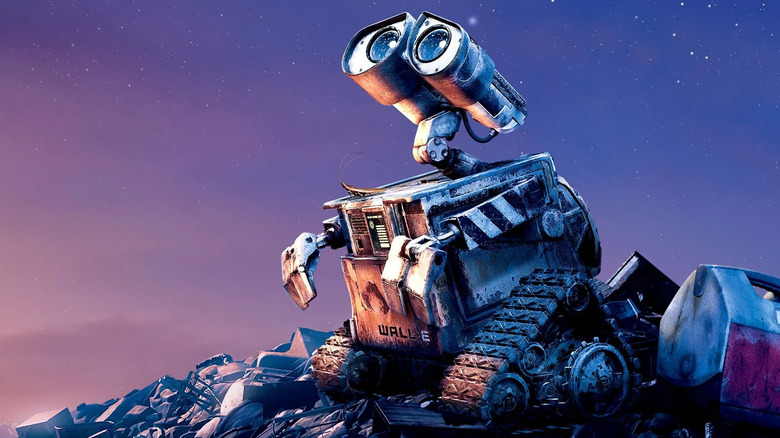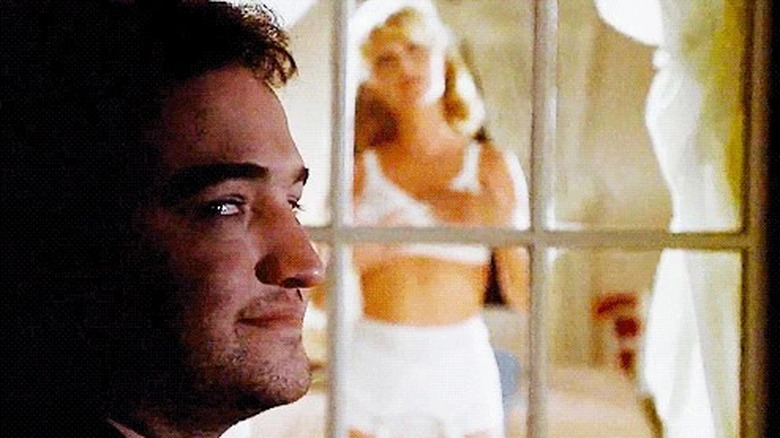How A 'Racy' Scene From Animal House Influenced Pixar's WALL-E [Exclusive]
When it comes to storytelling, "WALL-E" is as close to perfection as you can get. It was one of Disney-Pixar's most charming hits ("Directed with a poet's eye," says Peter Travers at Rolling Stone) and one of the highest-grossing films of 2008.
Andrew Stanton stood at the helm of Pixar's ninth feature, which isn't silent but the spiritual kin of silent films. The future-set story finds its Charlie Chaplin avatar in a robot of the same name as the title. WALL-E is a non-verbal trash-collecting machine who lives a solitary life on a future Earth so befouled by garbage that, like a nightmare roommate, the humans fled to space rather than tidy up after themselves. A visit from a hot probe-bot and an update on Earth's viability brings the musical-loving WALL-E out of the smog and onto a starship, where mayhem, rebellion, mutiny, and ultimately love ensues.
/Film's resident Pixar animation expert Josh Spiegel has chronicled the risk that Pixar Animation Studios took with a relatively dark story. Like many of the studio's successful ideas, it came from an influential lunch where, among other seedling prompts, the question was asked, as Spiegel puts it, "What if mankind had to leave Earth and somebody forgot to turn off the last robot?" Its influences range from Stanley Kubrick's "2001: A Space Odyssey" to the rise of Amazon and Apple, but it turns out that some of its influences might not be so easy to explain to the kids.
To mark the film's induction into the Criterion Collection, our man Spiegel spoke with Andrew Stanton, who cites a raunchy frat party movie as a touchstone for the development of the sweetest lil' robot you'll ever meet.
Is that a Buy-n-Large pin on your uniform?!
"WALL-E" is a vivid, imaginative film filled with social criticism, some of which might fly over the heads of the wee ones in the audience. WALL-E the robot showcases the doldrums of a soul-crushing 9-to-5 and inadvertently incites a robo-rebellion aboard the starship Axiom, all with minimal vocabulary.
In trying to get the Pixar team in the headspace to depict an endearing character who doesn't say much but gets his emotions across nonetheless, Stanton had some predictable works in mind, like Albert Lamorisse's dialogue-minimal short film "The Red Balloon." But a surprise comes in his interview with Josh Spiegel:
"It's easy for us to say now because 'WALL-E' is done, but 'WALL-E' didn't exist. I had to say, 'This is the state of mind you'll be in when you watch the film I want to make.' I'd either have something pure like 'The Red Balloon' or 'The Black Stallion,' which had just music and action and atmosphere. But I knew there would be times when dialogue was said, and that your brain would be trying to interpret the emphasis of what their dialogue was.
From 'Animal House,' it was the racy scene with John Belushi on the ladder and being motivated by lust to get to the next window, just showing you how much characters' intentions and goals can be 100%, if not even more, clear to the audience."
That's right, kiddies — the "Peeping Tom" scene from Ivan Reitman's "Animal House" acted as a storytelling North Star for one of the most wholesome children's movies of the 21st century. John Belushi's "Bluto" Blutarsky doesn't provide much commentary as he endeavors to observe nude college students, but his motivation was hilariously clear nonetheless.

